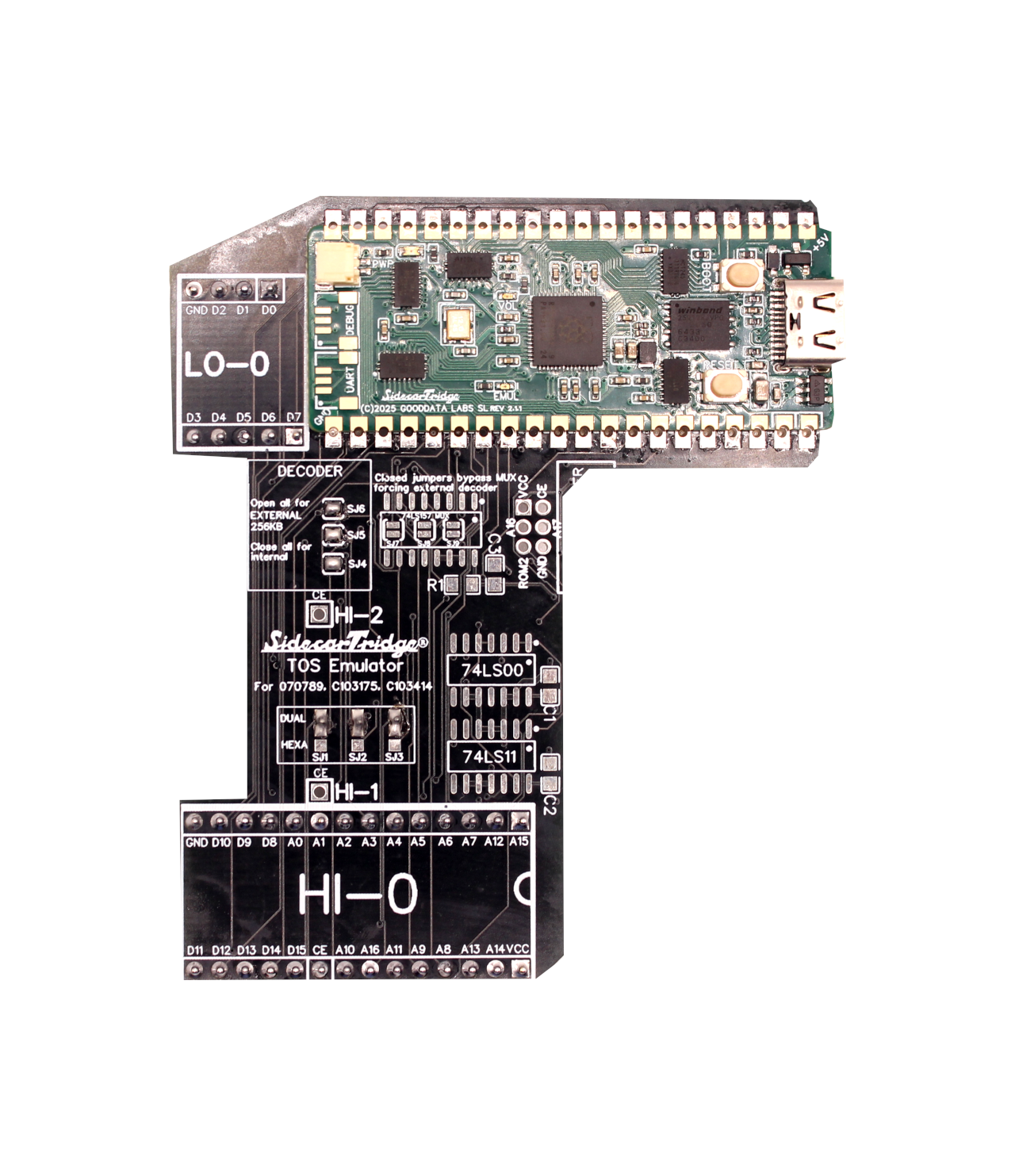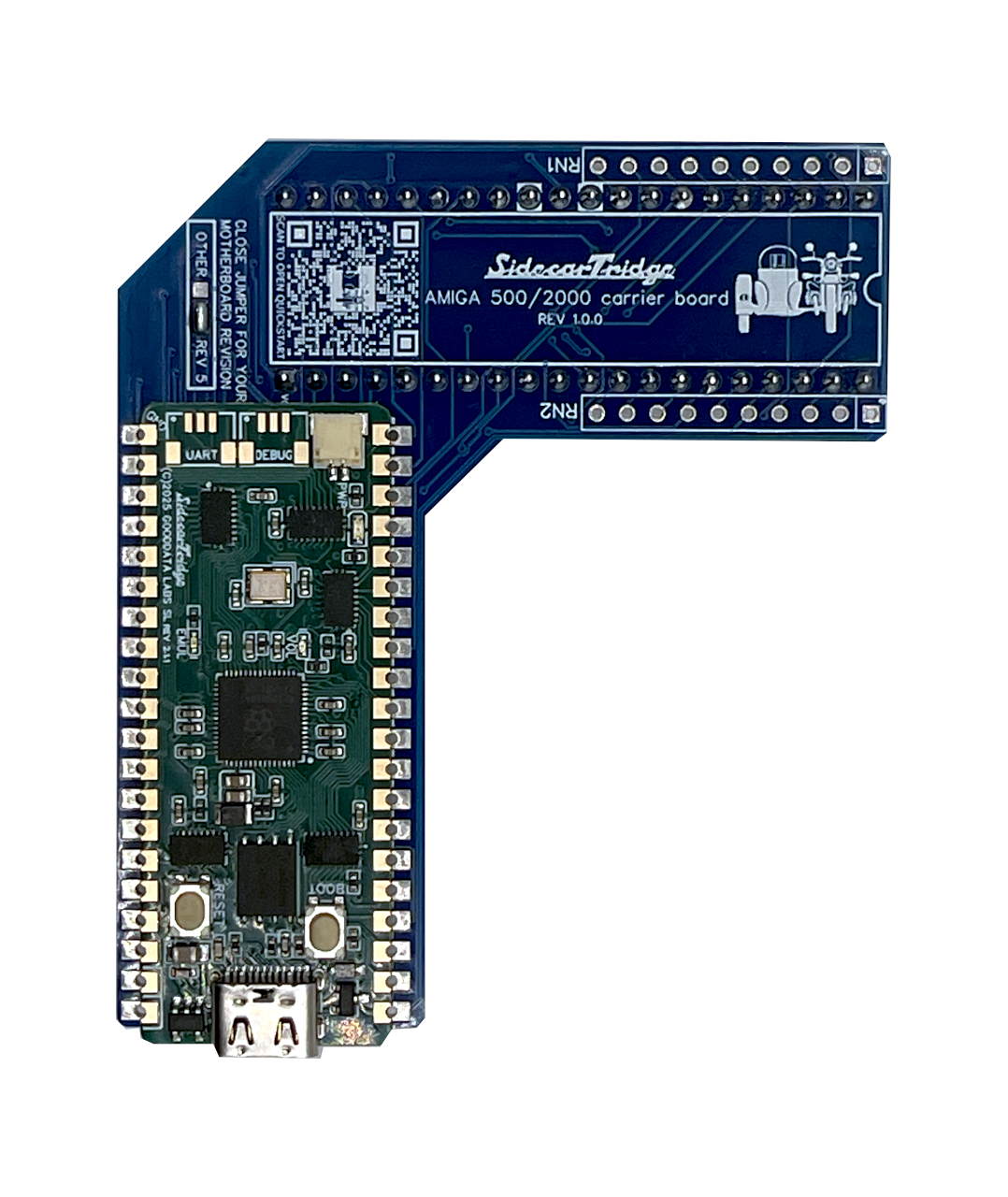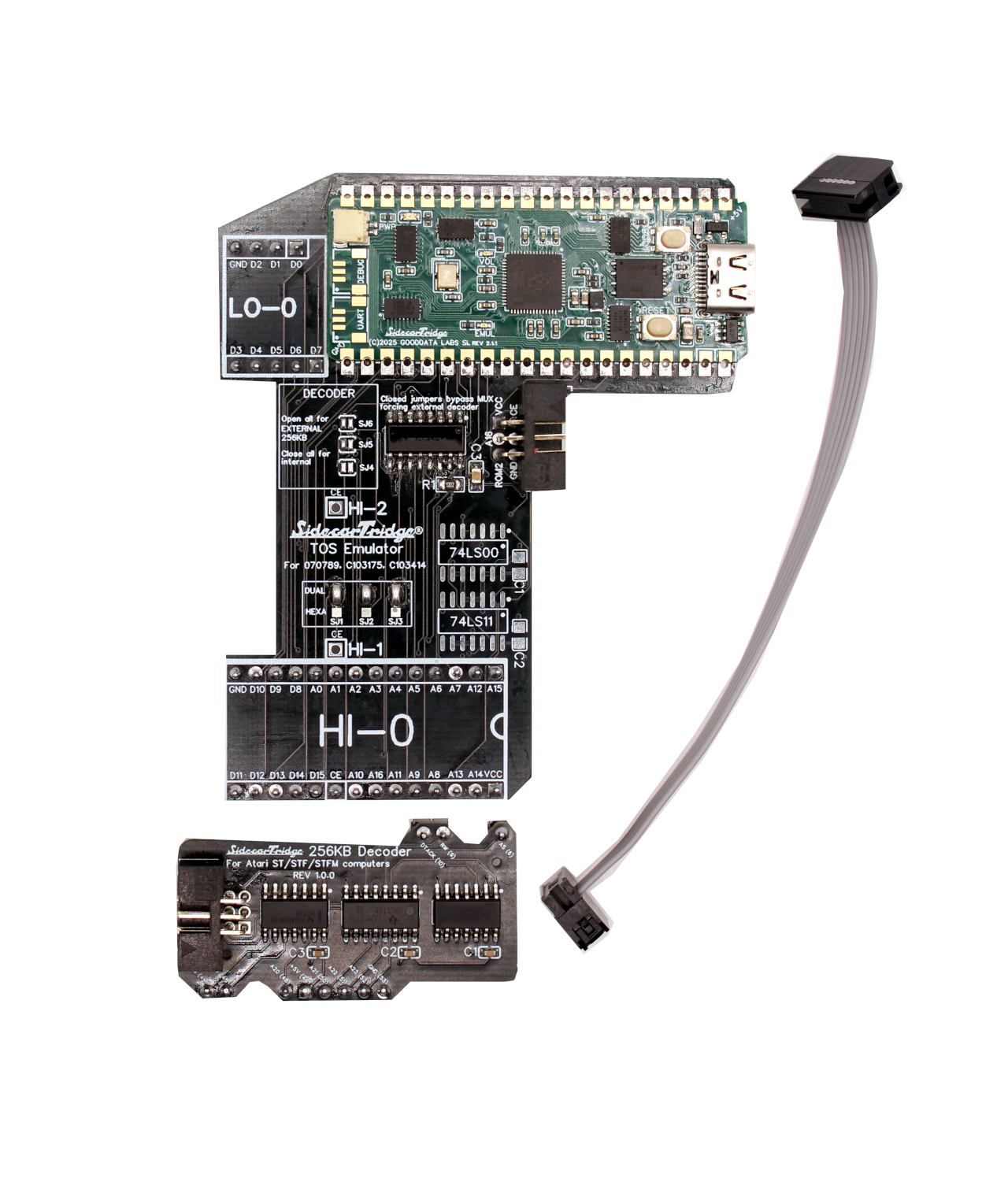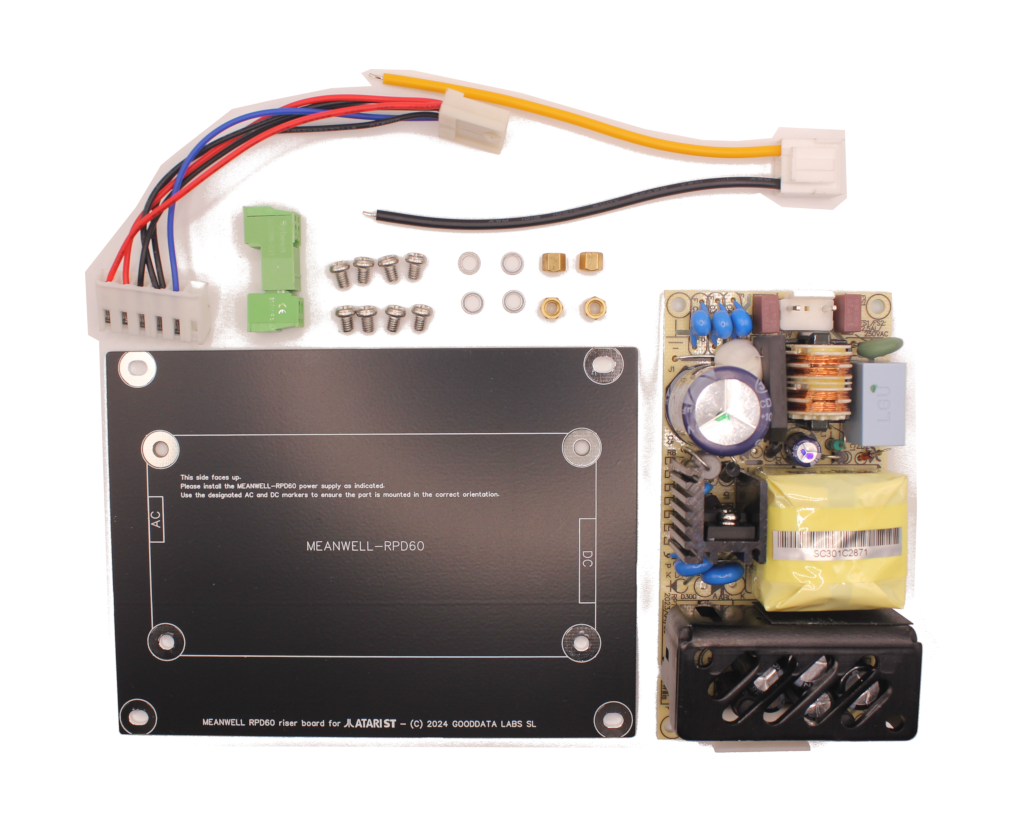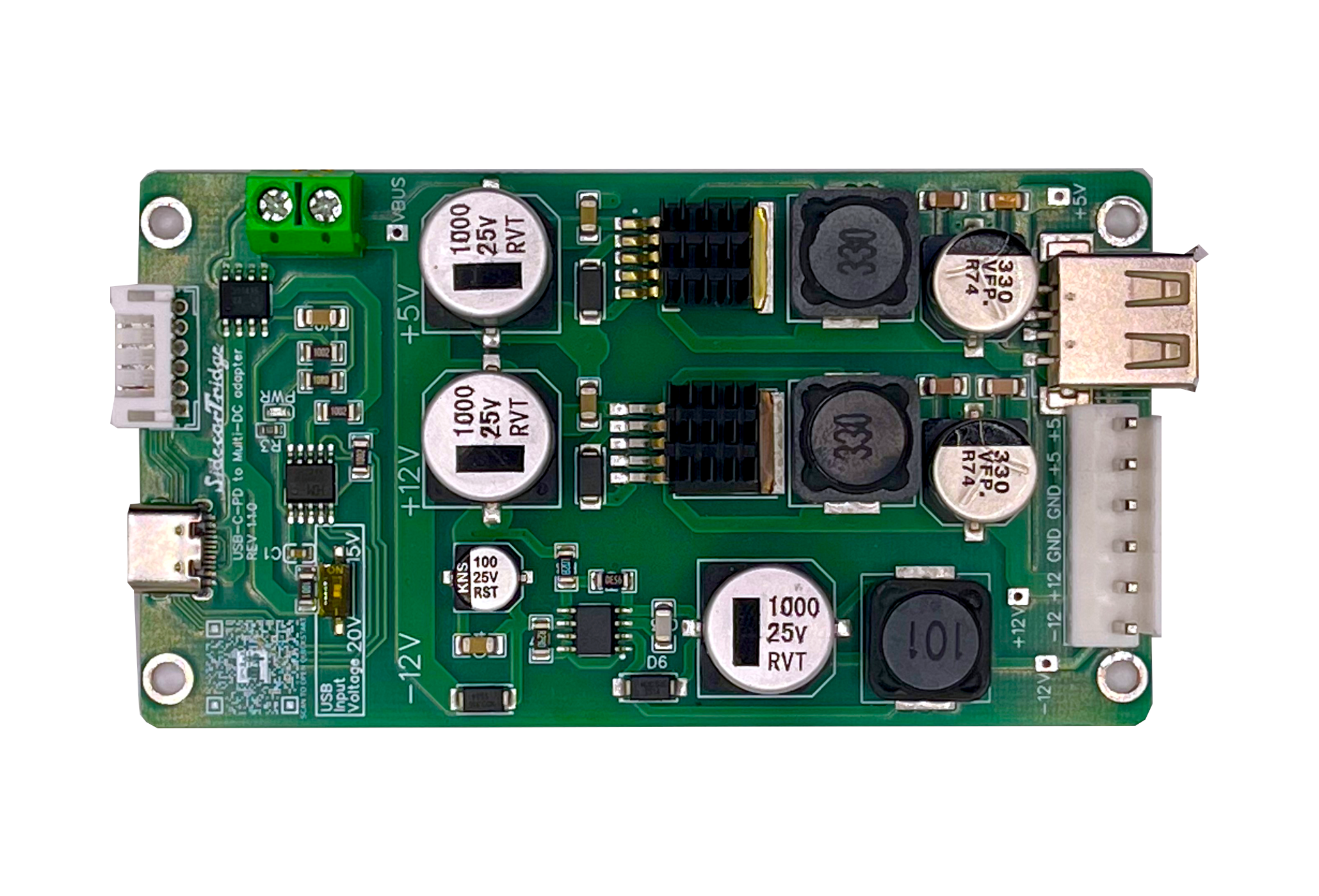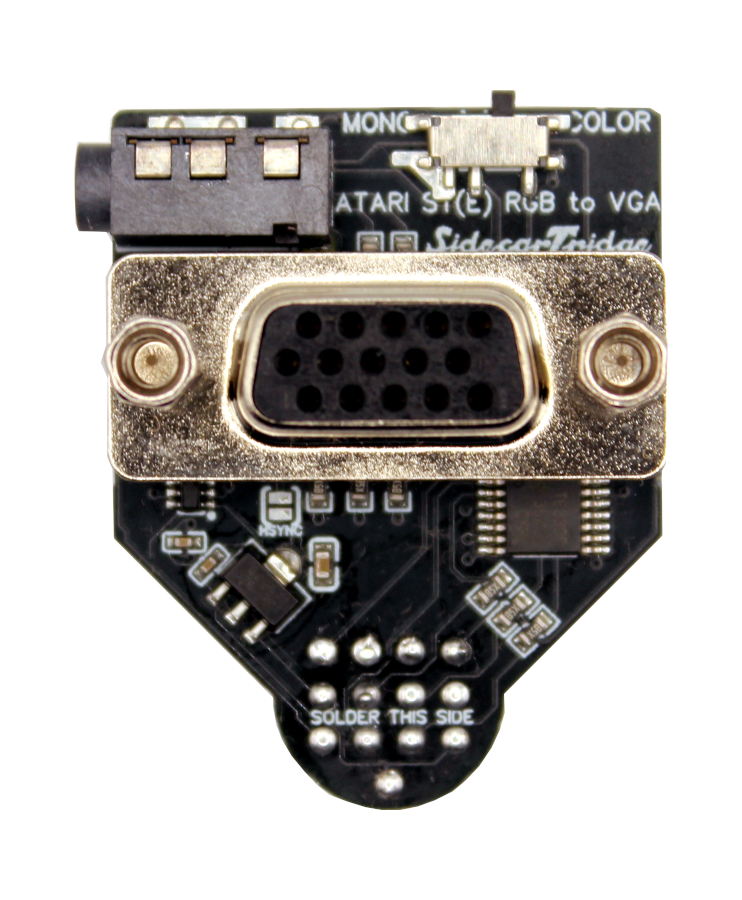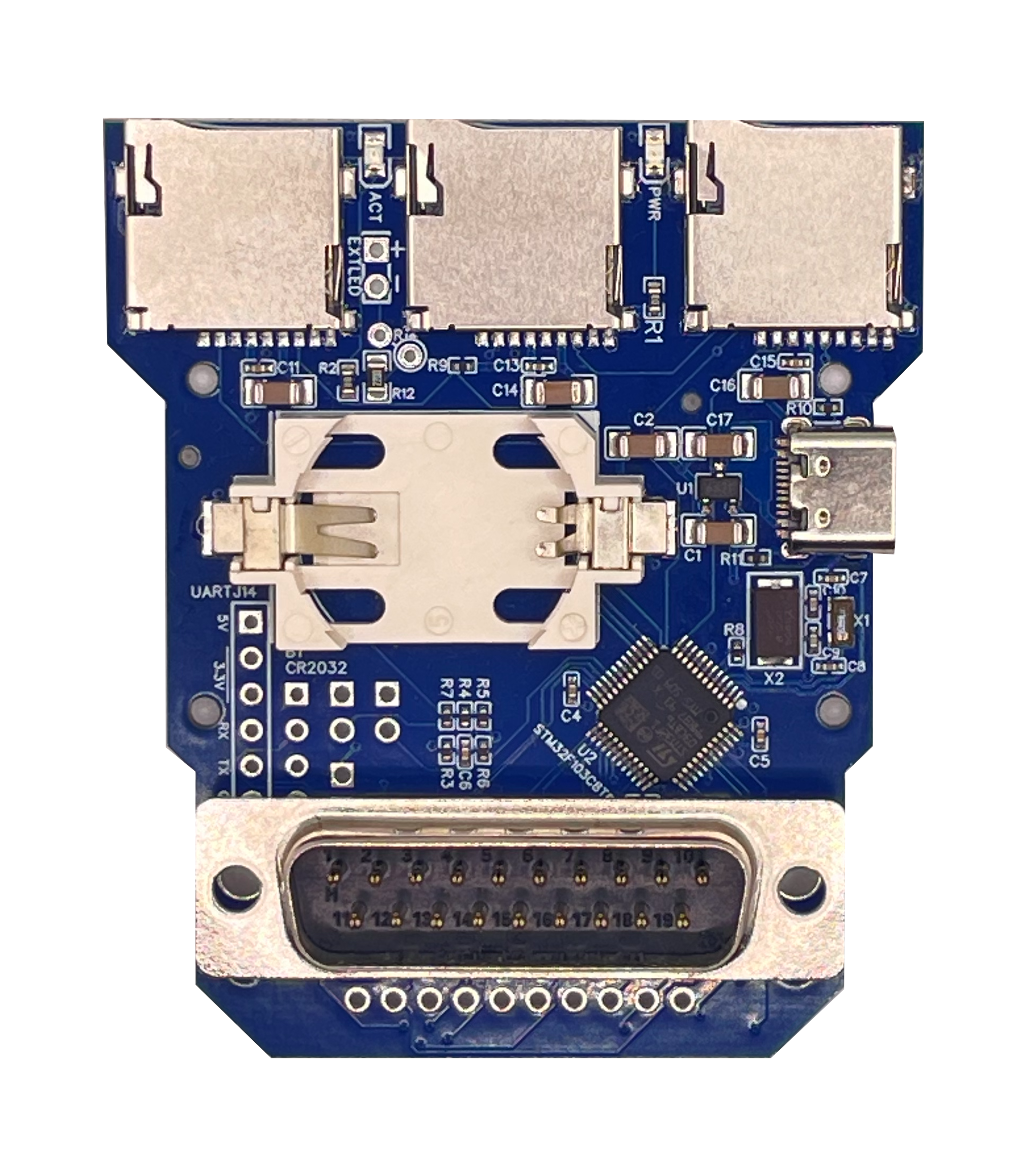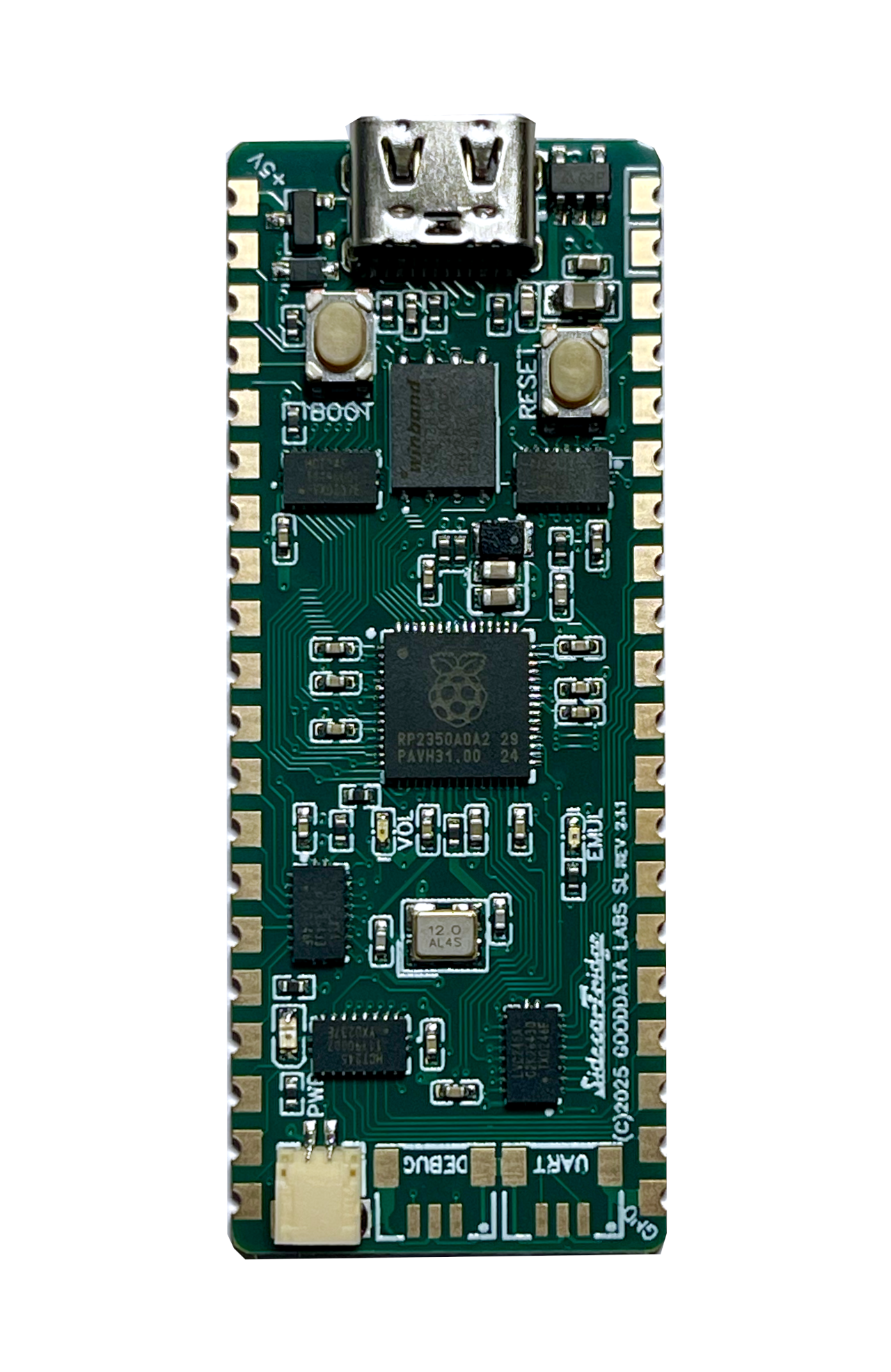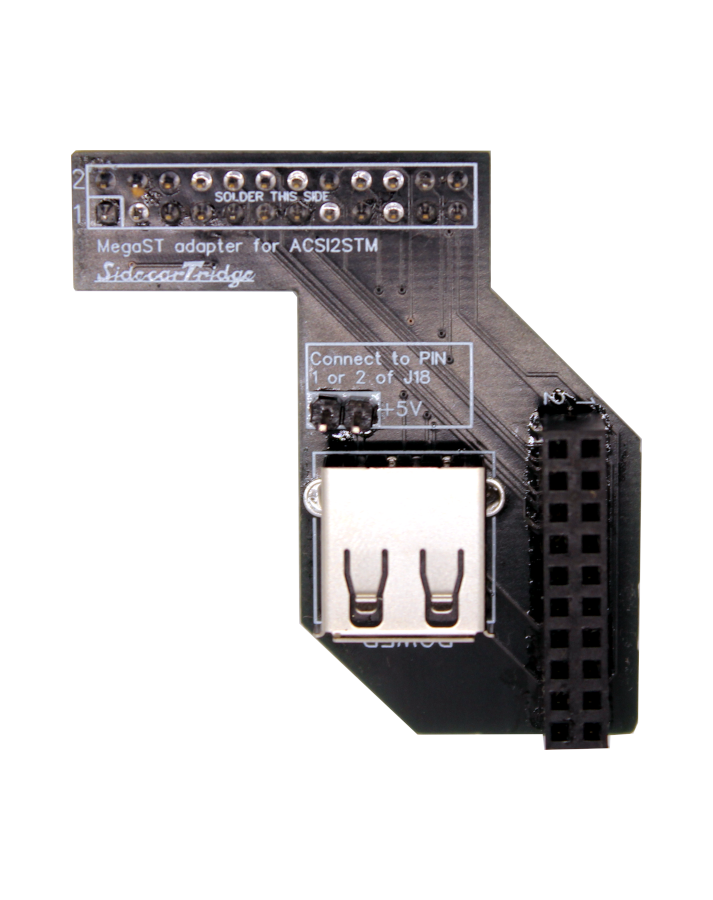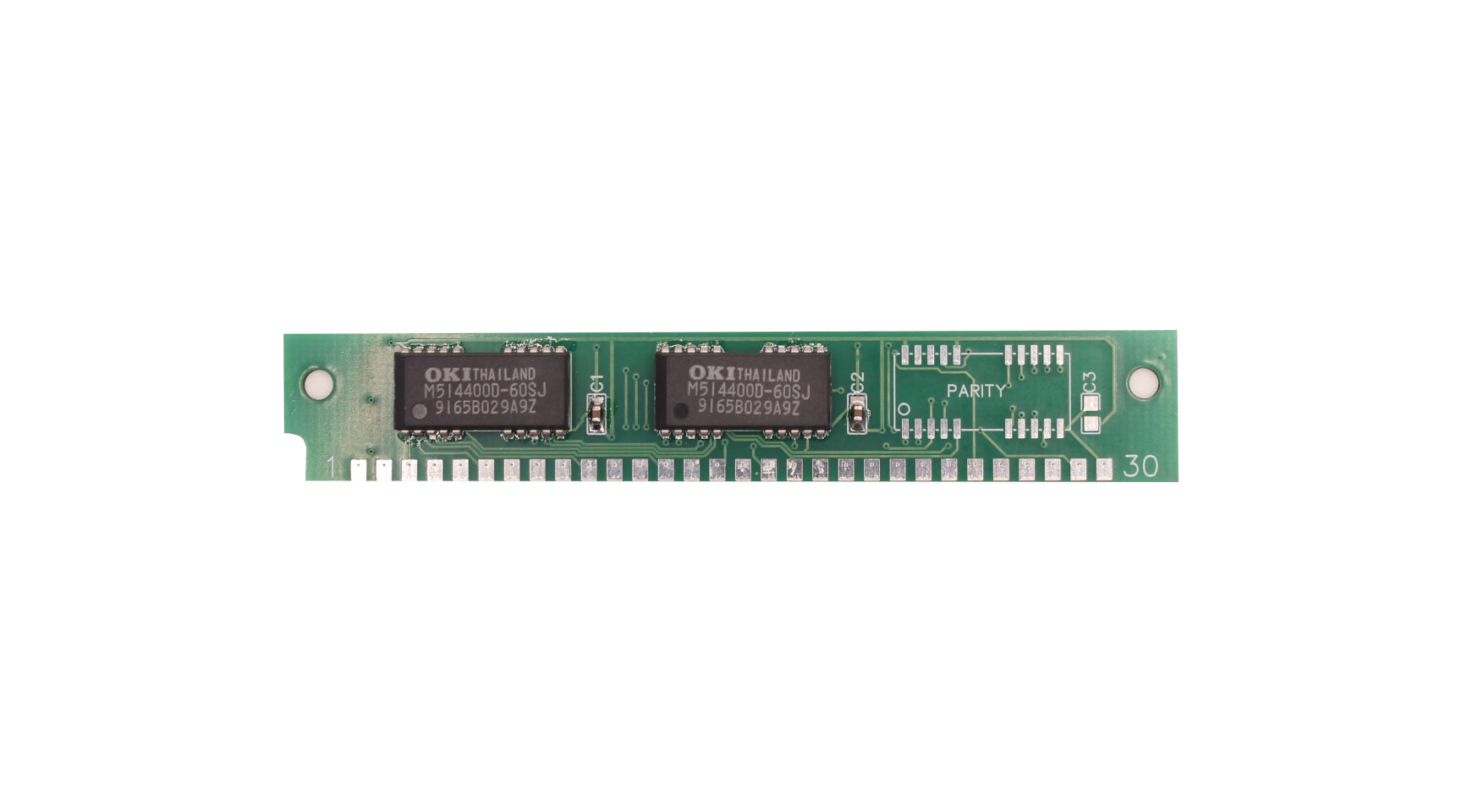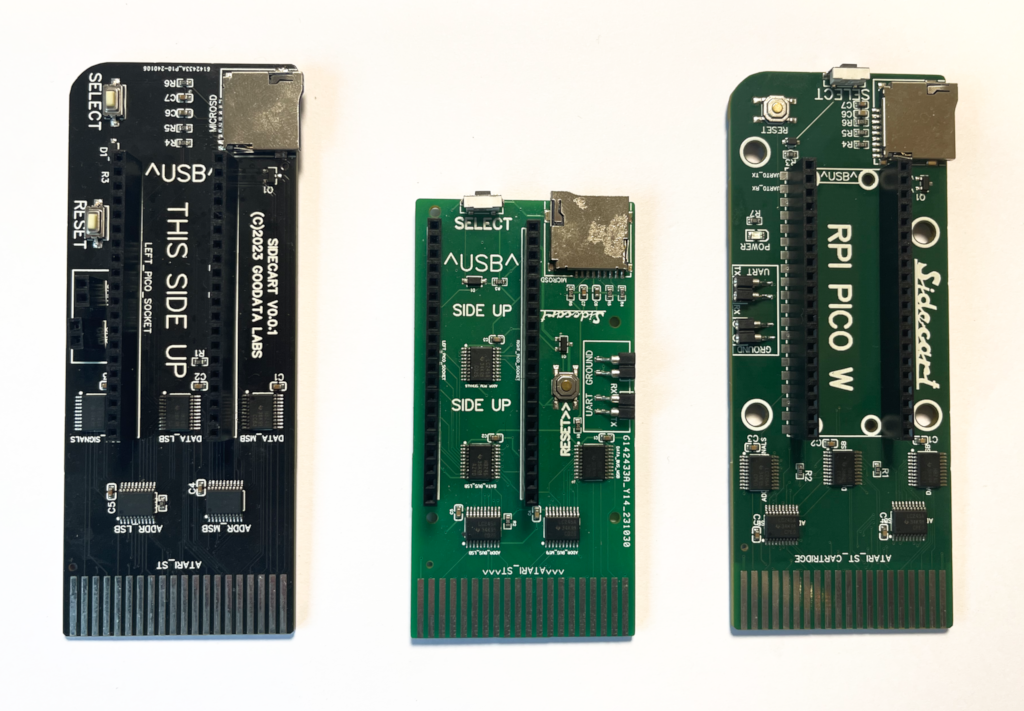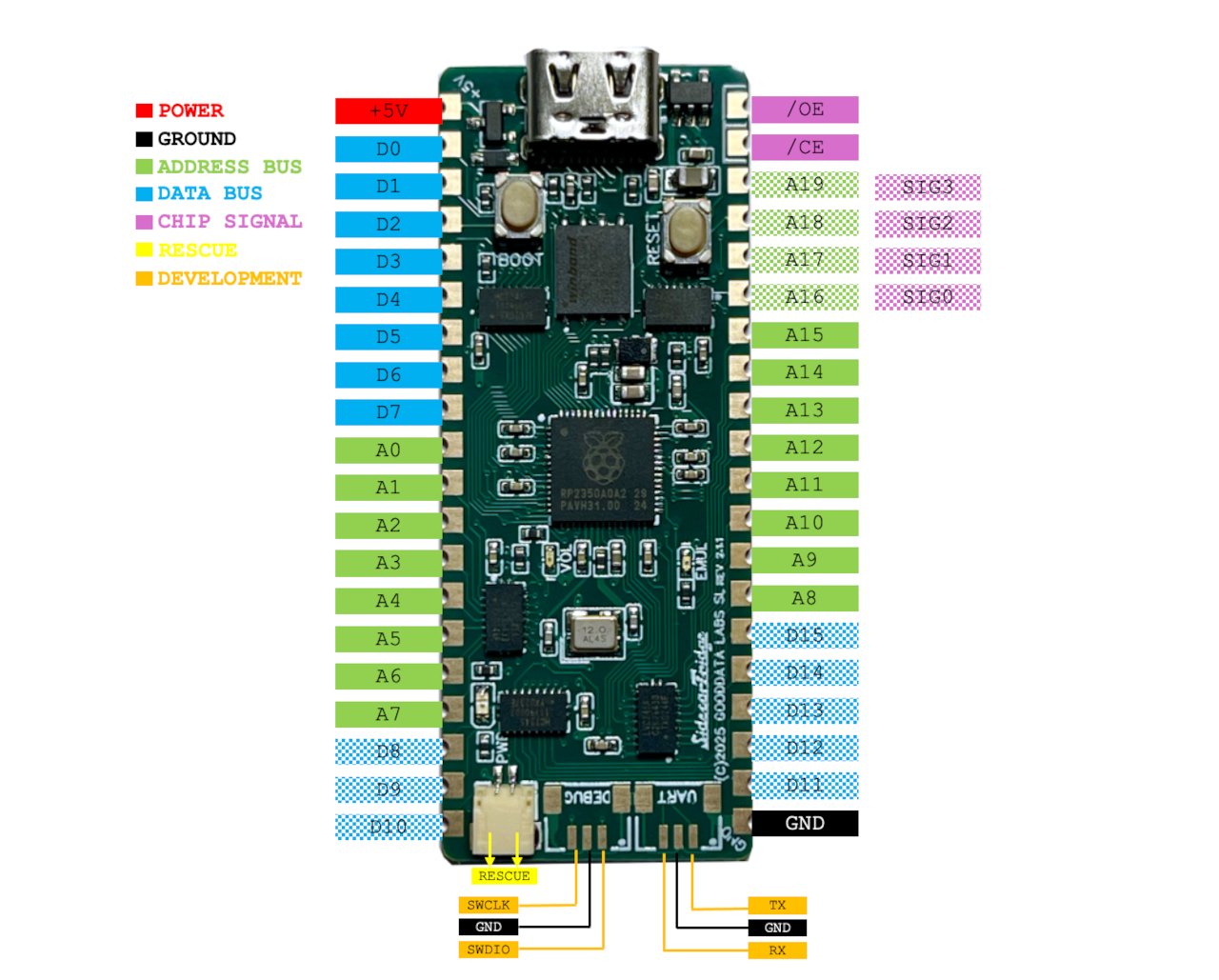Year Zero: My Journey Back to the Future of Computing
You know, sometimes life has a funny way of coming full circle. I still remember the day I got my good old Oric-1. It was love at first byte. I spent countless hours tinkering with it, not entirely sure if I was coding or just making the poor thing suffer. Fast forward 40 years, and after a wild ride through the IT industry—complete with bankruptcies, acquisitions, layoffs, promotions, and yes, even demotions—I find myself back where it all began: captivated by the magic of retro computing.
One thing I’ve learned from decades in this field is that the first version of any product is, well, let’s just say “a learning experience.” A friend of mine insists that the first iteration of software has to suck, and honestly, he’s got a point. It’s like baking your first cake—you might end up with a charred brick, but it’s a necessary step before you create something edible.
That’s why I embrace the concept of Year Zero. It’s the inaugural year where everything starts from scratch—full of experimentation, plenty of mistakes, and learning curves that feel almost vertical. It’s chaotic, frustrating, and absolutely essential. For a venture like SidecarTridge, Year Zero forms the foundation on which everything else is built, and it’s also the period where you start to see if the project has real potential for success.
So, let me take you through my Year Zero with the SidecarTridge project—a journey filled with tech trials, marketing mishaps, bureaucratic nightmares, and a few laughs along the way.
Incorporating the Company: Because Hobbies Sometimes Get Serious

What started as a fun side project quickly snowballed into something bigger. Realizing I needed to protect my personal assets, I decided to officially incorporate under Spanish law. Was this the smartest move? Jury’s still out. On one hand, it provided a safety net; on the other, I suddenly found myself neck-deep in taxes, invoices, and accounting—the unholy trinity of small business ownership.
And then came the joy of navigating European Union regulations, specifically the Extended Producer Responsibility (EPR). If you think debugging code is tough, try decoding EU environmental policies. Spoiler alert: it’s not for the faint of heart.
Interestingly, I discovered that many retro computing shops and makers simply ignore these mandates. No taxes, no VAT, no EPR fees—nothing. They just sell their gadgets and sail off into the sunset. While it was tempting to follow their lead and bypass the regulations, I couldn’t shake the feeling that eventually, the tax authorities would catch up with me, and I wasn’t willing to take that risk.
Extended Producer Responsibility (EPR): The Gift That Keeps on Taking
So, what exactly is EPR? In theory, it’s an environmental policy that makes producers responsible for the entire lifecycle of their products, from creation to disposal. Noble idea, right? In practice, it’s like being handed a Rubik’s Cube with no solution.
Here’s the deal: if you sell electronic devices in Europe, you have to register and pay fees in every single country you sell to—yes, all 27 of them. Fees are based on the weight of your products, and you have to report your sales data regularly, sometimes in different languages and on different schedules.
Oh, and if you miss a payment or a report? Prepare for fines hefty enough to make your accountant weep.
To put it in perspective, eBay estimates that complying with the EPR directive can cost small businesses up to €140,000 and 39 working days each year. That’s a lot of vintage computer parts.
So, I had to make the tough call to stop selling the SidecarTridge in several European countries. To my friends in Austria, Bulgaria, Cyprus, France, Greece, Latvia, Lithuania, Luxembourg, Portugal, Romania, Slovakia and Sweden—I genuinely wish it were different. But until I find a money tree or the regulations change, my hands are tied.
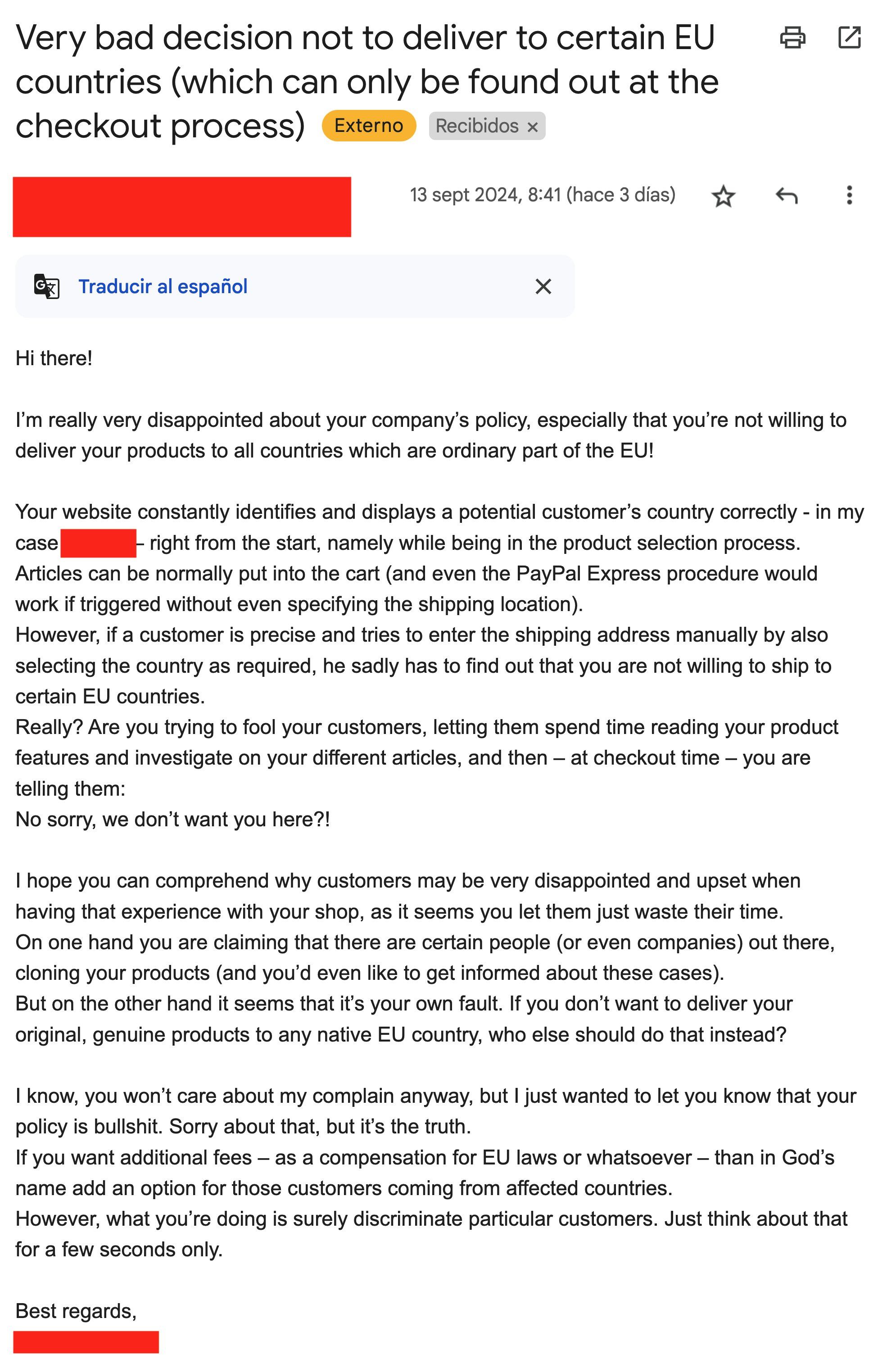
Oddly enough, this is a regulation for any company selling electronic devices in Europe. But do you think that the Chinese company called Store1234213 selling Everdrive clones in Aliexpress pay it? Some will do it, most of them won’t. And they will continue selling their stuff without any problem while the European companies will be fined.
Sales Operations: Diversify or Die Trying
When it came to selling the SidecarTridge, I initially went with Shopify, and let me tell you, that was a solid move. It handled the heavy lifting, allowing me to focus on the fun stuff—like figuring out why my latest prototype was smoking.
But relying on a single platform felt a bit like putting all my floppy disks in one basket. So, I branched out to eBay and Tindie. Here’s how the sales broke down:
Not too shabby, right? Well, until the EPR regulations reared their ugly head again, forcing me to pause sales on some platforms. Lesson learned: the more channels you have, the better your chances of staying afloat when one springs a leak.
I also reached out to potential resellers in the US and UK. Unfortunately, many were more interested in taking open designs and slapping their own labels on them. Call me old-fashioned, but that didn’t sit right with me.
Next year I will investigate other e-commerce platforms with low bureaucracy and fees. Elecrow is a good candidate. I am not so sure about Aliexpress or Amazon. Also some local platforms like Wallapop, OLX, etc.
Honest Marketing: Sharing the Love
Back in my corporate days, we often debated the merits of “Honest Marketing.” The idea was to build genuine relationships rather than shove products down customers’ throats. With SidecarTridge, I embraced this wholeheartedly.
First I have tried to reach the retro computing community through the social networks. I set up a Twitter account and a YouTube channel where I shared updates, tutorials, and probably too many bad jokes. I engaged with the community on Reddit, started a Discord server (which, to my surprise, grew to over 200 members), and participated in forums.
You can find me in Atari-Forum and Retrowiki. I sometimes also hang out in the Exxos Forum, but I am not so active there. I like it very much because it’s a very technical forum, but I feel I cannot contribute so much. Sadly, my posts in AtariAge takes a lot of time to be approved, so I am not active there.
I even made appearances on podcasts like AmigaWave and talks at Open Source conferences like OpenSouthCode.
It wasn’t about making a hard sell; it was about connecting with fellow enthusiasts who share the same passion.
“Dishonest” Marketing: Hard Pass
If there’s such a thing as “Honest Marketing,” then logically, “Dishonest Marketing” must exist too, right? Personally, I don’t like labeling it that way, but it’s ok for the sake of discussion.
Did I dabble in any “Dishonest” Marketing techniques? Absolutely not. I didn’t pay for ads, reviews, articles, or influencer shout-outs to promote my products. No SEO or SEM tricks, and certainly no fake reviews or followers.
My approach to SEO and SEM has been entirely organic—good old-fashioned blogging, answering questions in forums, and creating videos. When it comes to social networks, it’s all about genuine interactions.
Now, were there temptations? Sure. I noticed a direct correlation between YouTube unboxing videos of my devices and an uptick in sales. It was tempting to send out free devices to influencers, but I resisted. The only freebies I’ve handed out were to folks who genuinely helped with testing edge cases and to developers contributing to the project.
I also steered clear of scarcity tactics—you know, claiming the SidecarTridge is a limited edition with only 100 units available, so you’d better buy now or miss out forever. That just doesn’t sit right with me.
And I didn’t play the sympathy card either. No claims about how my devices are a selfless gift to the Atari ST community, or how I’ve poured endless time and money into the project without profit or expectation of return.
Retro computing enthusiasts are highly sensitive to dishonest marketing techniques. They’re knowledgeable, savvy, and can spot inauthenticity from a mile away.
Financing: Keeping the Lights On Without Selling My Soul
In my previous ventures, I often found myself in the somewhat awkward position of asking strangers for money—pitching ideas with the enthusiasm of a game show host high on caffeine. But with SidecarTridge, I decided to take a different route. Maybe it’s because I now invest in tech companies for a living and know the drill all too well. Let’s face it, SidecarTridge isn’t exactly the kind of project that makes investors’ eyes light up with dollar signs: Non-invertible.
So, I didn’t seek out investments, loans, crowdfunding, or even donations. I funded the whole thing myself. Have I made a profit yet? Well, not exactly. But I haven’t lost money either—I’ve essentially broken even, which I’ll take as a small victory.
To keep things on the up and up with the Spanish tax authorities, I started paying myself a modest salary from the company. It’s a bit surreal, really—like taking money out of one pocket and putting it into the other, all while filling out paperwork to prove you did it.
But here’s the cool part: the company is already self-sustainable. Excellent for a Year Zero project, right? I can even afford to buy groceries now. And maybe a new mouse. And soon a Falcon.
The Top 5 Expenses in Year Zero
- Salary (I love groceries and they don’t pay for themselves)
- Manufacturing Costs (those SidecarTridges don’t build themselves)
- Taxes (death and taxes, as they say)
- Trademark Registration (more on that rollercoaster later)
- EPR Fees (still a sore spot)
Paying for manufacturing turned out to be an adventure in currency exchange. Most of my expenses were in Yuan or US Dollars, making exchange rates a significant factor. Early on, I naively accepted the rates my commercial bank offered. Rookie mistake.
Then I discovered Revolut Business (no affiliate link here, just genuine appreciation). It let me exchange money at the interbank rate, saving a decent chunk of change. This works great if you’re dealing with thousands of euros. If you’re handling hundreds of thousands, well, that’s a different game entirely.
The same principle applies to payment gateway fees. Platforms like Shopify charge different rates depending on your subscription plan. It’s worth doing the math to see which plan balances out with your sales volume. Sometimes paying more upfront reduces the per-transaction fees, much like buying in bulk saves money in the long run.
Let’s not forget about the myriad subscription fees for services that keep the company running: Shopify, Revolut, AWS, Google—the list goes on. If you can afford it, paying annually instead of monthly can shave off 20-25% of the cost. Getting a couple of free months each year feels a bit like finding an extra life in a video game.
Trademark Registration: A Not-So-Funny Story

Just when I thought I had enough on my plate, I received a cease and desist letter from a large corporation. They claimed that “SidecarT” was too close to their trademark. After considering my options I decided to rebrand to SidecarTridge and register the trademark.
Registering a trademark isn’t cheap, especially for a small business, but it was a necessary move to protect the brand and avoid future legal headaches. Lesson learned: it’s better to secure your trademarks early on before someone else decides they own your name.
Registering a trademark is cheap for large corporations but it’s not cheap for small companies. You need a consultancy company to do it for you. Assume it will cost about €3000 per trademark in Europe. And an additional €1500-2000 per additional large countries.
Logistics: Automation is Key
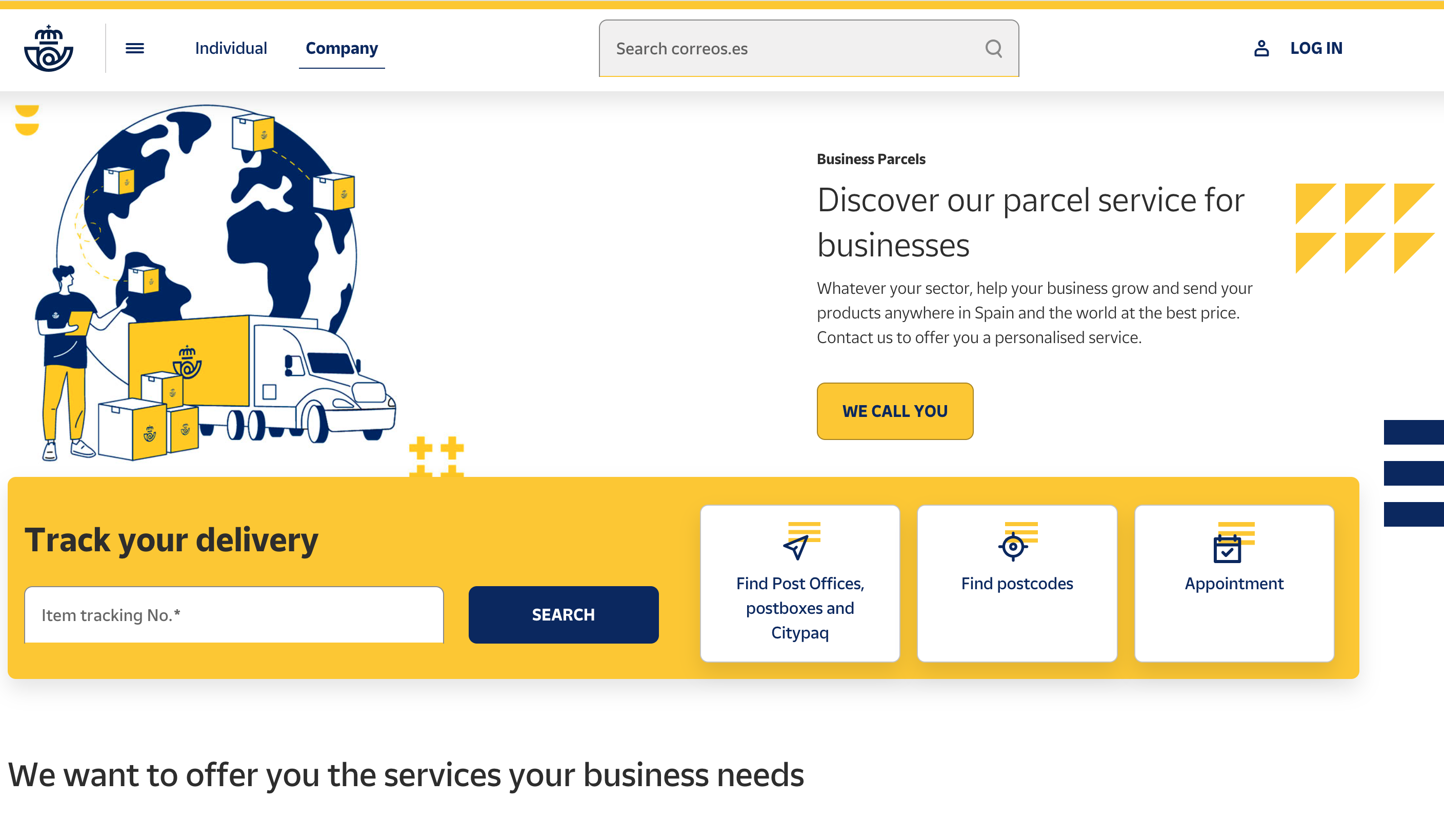
In the beginning, I was handling shipping manually through the Spanish postal service, Correos. It was time-consuming and about as exciting as watching paint dry. Signing a contract with them improved things significantly—better rates, better service, and no more standing in line at the post office.
Being the tech geek that I am, I couldn’t resist automating the process further. I developed a Python script using Selenium that pulls order information from Shopify, eBay, and Tindie, and automates the creation of shipping labels on the Correos website. It’s a bit of a hack, but it works like a charm.
Looking ahead, I’m considering partnering with an international courier for faster shipping options. One thing I’ve learned is that offering shipping without tracking numbers is a recipe for disaster. Lost packages lead to unhappy customers and unnecessary headaches.
Customer Support: Learning the Hard Way
I assumed that supporting the SidecarTridge would not be too hard because the retro computing community is incredibly smart and resourceful. Most users can troubleshoot issues that would baffle the average person. And while they rarely needed help with operating the devices, I didn’t anticipate the challenges that come with selling physical products.
I miscalculated the number of broken devices, lost shipments, and returned items. Manufacturing isn’t flawless; some units had defects. Shipping mishaps led to packages going missing. Returns happened due to various reasons, from customer mistakes to unmet expectations.
These issues weren’t overwhelming individually, but collectively they added up, requiring time and resources to resolve. It taught me that no matter how capable your users are, you can’t overlook the importance of robust customer support.
Moreover, these unexpected problems have a direct impact on the overall cost of the devices. Now that I have historical data, I can make more accurate calculations. This means that in 2025, I’ll need to adjust the pricing to account for these additional expenses. It’s a necessary step to ensure the project’s sustainability.
The Retro Computing Personas: My Kind of People
One of the most rewarding parts of this journey has been connecting with the retro computing community. It’s a diverse group, united by a passion for vintage tech that sometimes borders on obsession—in the best possible way, of course. Here’s a snapshot of the personas I’ve encountered:
Most enthusiasts I’ve met are in their 40s or 50s, many drawn back to the computers of their youth or early careers. The community is primarily male, which isn’t too surprising given the demographics of the tech world back in the day.
Geographically, the largest communities are in North America and Western Europe. While I haven’t had the chance to interact much with enthusiasts from Asia, Japan, or South Korea, I’ve heard they have robust retro subcultures centered around both local and international vintage systems. Maybe that’s an adventure for Year One.
One thing that’s struck me is how language can be both a bridge and a barrier. Unlike some other tech communities where English dominates, the retro computing world has vibrant forums in French, German, Polish, Spanish, and more. So I sometimes need Google Translate to help out.
Many members have backgrounds in computer science, engineering, or IT. These folks aren’t just hobbyists; they’re often incredibly tech-savvy, with a depth of knowledge that puts my own to shame. They’re the kind of people who can recite memory addresses from systems that were obsolete before some of us were born.
What’s fascinating is how spending power varies across regions. In countries like Spain, where the average salary is lower than in Germany, the US, or the UK, enthusiasts are still willing to invest in hardware, software, and accessories. Some even splurge on high-end systems or rare items, proving that passion often outweighs practicality.
What really motivates this community? A mix of collecting, preserving, and tackling technical challenges. And, of course, a hefty dose of nostalgia. There’s something magical about booting up a machine from decades ago and hearing that familiar startup sound.
But the best part is the camaraderie. Compared to some professional tech circles I’ve been in, the retro computing community is incredibly friendly and supportive. They’re eager to help, share knowledge, collaborate on projects, and teach newbies. It’s less about competition and more about collective enthusiasm.
Sure, every group has its outliers, but by and large, the people I’ve interacted with are genuinely wonderful. They’re the kind of folks who’ll spend hours troubleshooting a stranger’s hardware issue or send you a care package of rare chips just because. It’s a reminder that tech isn’t just about machines; it’s about the people who bring them to life.
Products: The SidecarTridge Family
Let me dive into the heart of the SidecarTridge project: the products themselves. Our flagship device, the SidecarTridge Multidevice for Atari ST computers, has been making waves in the retro computing community. As of mid-November 2024, I’ve sold over 1,100 units. Not too shabby for something that started as a hobby project!
But let’s be honest—the device is still in its infancy. There’s a ton of room for improvement, especially on the software side. I’m a firm believer that any good product is a continuous work in progress, and the Multidevice is no exception.
Firmware Roadmap for 2025
Here’s what I’am cooking up for the firmware in the coming year:
- Transitioning to a Modular Firmware: Moving away from a monolithic firmware structure. This will make updates more manageable and customization a breeze.
- Over-the-Air (OTA) Updates: Gone will be the days of manual firmware updates. You’ll be able to update your device seamlessly over Wi-Fi.
- Web Interface for Configuration: I’am developing a user-friendly web interface to simplify device configuration.
- Network Disk Support: Access network drives directly from your Atari ST. Imagine pulling files from your modern NAS onto your vintage machine. I had to halt the development of this feature due to lack of RAM memory in the bloated monolithic firmware.
- Network Stack Support: This will enhance connectivity, allowing your Atari ST to communicate over modern networks. We will teach the old dog a new trick!
- Block Storage Support: Simply using the SD card as a direct storage device like IDE hard drives, UltraSatan or others.
- Keyboard and Mouse USB Support: It has been always in the backlog. It’s time to implement it.
- Third-Party Module Support: I’am opening up the platform for other developers to create modules. The more, the merrier!
- Support for Accelerated/Modded Motherboards: Ensure compatibility with customized hardware setups. I
- Atari TT/Falcon Support: Another feature that has been in the backlog for a long time. It’s time to implement it.
Hardware Considerations
Now, on to the hardware side of things. I’m eagerly awaiting the release of the new Raspberry Pi Pico 2 W. If it’s simply a drop-in replacement for the old Pico W but with the new RP235x microcontroller, I’ll need to rethink our design.
The current SidecarTridge is based on the RP2040 microcontroller, which, while fantastic, has limitations—specifically in the number of available GPIOs (General Purpose Input/Output pins). This restricts our ability to add new features. Here are some of the hardware enhancements I’m considering:
- SDIO Support for the SD Card: The current SPI (Serial Peripheral Interface) is a bottleneck for reading (and writing) to the SD card. SDIO (Secure Digital Input Output) can be 4-5 times faster but requires more GPIOs. Faster SD card access means smoother performance overall.
- Dual SD Card Support: Depending on the flash memory available in the Pico 2 W, I might add support for a second SD card. More storage options are always a good thing.
- Display Support: Integrating a small display could provide real-time information and enhance user interaction.
- Audio Support: Adding audio capabilities would open up new possibilities for applications and fun projects.
If the Pico 2 W doesn’t meet our needs—particularly regarding GPIO availability—I might consider a custom design with an onboard Wi-Fi module and the high-end RP235x microcontroller.
The SidecarTridge ROM Emulator
Let me introduce you to our second product: the SidecarTridge ROM Emulator. Unlike the Multidevice, which is deeply entrenched in the Atari ST ecosystem, the ROM Emulator casts a wider net. It’s designed for any device—not just computers—that uses ROMs.
For Atari ST users, I have the SidecarTridge TOS Emulator, which is essentially the ROM Emulator tailored for the Atari ST’s operating system.
Here’s how the two products stack up:
- Multidevice: Rich in features and goes deep into the Atari ST hardware and software. It’s like a Swiss Army knife for your Atari ST.
- ROM Emulator: Offers a few but critical low-level features applicable to a broad range of devices. Think of it as a universal replacement of EPROMs and EEPROMs at runtime.
I’m working on a new version of the ROM Emulator that will support 512KB ROMs. This upgrade will make it compatible with systems like the Atari TT, Falcon, Commodore Amiga, and Acorn Archimedes. The current version supports up to 256KB ROMs, which is sufficient for the Atari ST and many 8-bit computers but limits its reach.
That’s why in Year One, I’am excited to expand the ROM Emulator’s horizons. Our first target is the Commodore Amiga community. The Amiga computers hold a special place in the hearts of retro enthusiasts, and I can’t wait to bring our technology to that platform.
There are also more products simmering in the pipeline, but they’re still in the prototyping phase. I’d love to spill the beans, but I think it’s best to wait until they’re ready for prime time. Let’s just say, if you’re a fan of retro tech, there’s a lot to look forward to.
Future Opportunities
I’m also exploring the idea of licensing the SidecarTridge technology to other companies. The ROM Emulator, in particular, has garnered interest due to its unique features. I’ve received inquiries, but with my current bandwidth, I haven’t been able to dive into those discussions fully.
In tandem with this, I’am developing Version 2 of the Configurator tool of the Multidevice, now aptly named Booster. This will be a web-based application allowing users to create their own modules and flash them to SidecarTridge devices. It will leverage new features in the RP235x microcontroller, especially around security for signing modules.
Booster will be released under a dual license:
- GPL for the Open-Source Community: Encouraging collaboration and innovation among enthusiasts and developers.
- Commercial License for Companies: Providing professional support and features tailored for commercial use.
This approach allows us to support the community while also creating opportunities for sustainable growth.
My approach along Year Zero has changed from build a product to build a product line. Diversifying our offerings not only spreads risk but also taps into different segments of the retro computing community. It’s about creating an ecosystem where each product complements the others, providing value to users in multiple ways.
Reflections: Bridging the Past and Present
As I wrap up this rollercoaster of a year, I can’t help but feel a deep appreciation for the journey. Retro computing isn’t just about old machines; it’s about rediscovering the joy and curiosity that got many of us into tech in the first place.
Sure, there have been challenges—some expected, others not so much. But every hurdle has taught me something valuable, whether it’s about international regulations, the importance of community, or just the need to double-check before hitting “Send” on an email.
In a world that’s always racing toward the next big thing, it’s been refreshing to slow down and look back. To tinker, to learn, and to share that experience with others.
Here’s to Year One and whatever adventures lie ahead. If it’s anything like Year Zero, I better buckle up.







